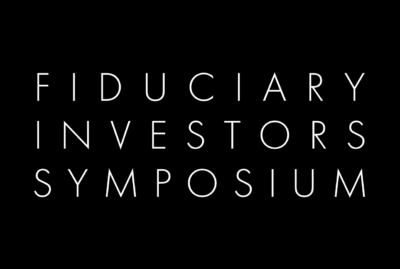Lunch and registration
Welcome
The next decade for investors looks like a past that feels very far gone: interest rates will again be the primary lever of monetary policy, inflation is no longer a non-factor, and households for the first time in decades are in a healthy position to leverage up. At the same time, there are known risk factors that are different than anything markets have ever experienced: governments are as indebted as they've ever been outside of wartime, the US dominates global asset markets and institutional portfolios, climate change is likely to fundamentally reconfigure economies and even geographies, and burgeoning AI/ML technologies harbor the potential to unleash a productivity miracle. Altogether, these forces are combining to make portfolio resiliency as important as ever. What does resiliency mean, and how should investors adjust their allocations to achieve it?
As a heterogenous asset class in full transformation, emerging markets require alternative ways of looking at them to benefit from the diversification and performance potential they offer. This session will explore a different way of looking at the asset class using three broad angles: emerging markets vs. China; commodities exporters vs. manufacturing countries; financial lenders vs. borrowers. We will look at the performance and correlation of these groups of countries throughout different market environments, specifically observing their behaviour in periods of market stress.
Has the investment environment fundamentally changed? And if it has then the investment strategies that have worked best since 2009 may no longer be the best strategies for the years ahead.
INCLUDES TABLE DISCUSSION
Afternoon tea
This session takes a deep dive into the investment philosophy and allocations of the Monetary Authority of Singapore, one of the country’s three sovereign wealth funds.
More than 60 per cent of the world’s population is in Asia Pacific and there are many opportunities due to the favourable demographics and genuine innovation. This session will look at how to make the most of the opportunities in Asia and the importance of having investment staff on the ground.
INCLUDES TABLE DISCUSSION
RAFFLES LONG BAR
Arrival tea & coffee
Welcome
The United States may be headed toward a disastrous conflict with China unless Washington updates its understanding of contemporary Chinese society.
There is almost as much data to support the idea that firms are diversifying away from China as there is showing that they are doubling down on the Chinese market. Regardless, as companies around the world reassess their links to the Chinese market in response to an increasingly challenging business environment in China and rising geopolitical tensions, business leaders need to get a clearer sense of whether diversification is happening and what form it is taking.
INCLUDES ROUNDTABLE DISCUSSION
Morning tea
India is now the most populous country on earth and has surpassed the UK to become the fifth biggest economy in the world. This session examines the political, economic and investment landscape.
INCLUDES ROUNDTABLE DISCUSSION
Seated lunch
This session will explore managing multi-asset portfolios in an increasingly complex economic and geopolitical environment and what this means for investing in Asia.
INCLUDES ROUNDTABLE DISCUSSION
This session looks at the drivers of asset allocation from an Asian perspective including technology leaders, semiconductors as the foundation of modern technology, food and energy independence, geopolitics and the “new ping pong diplomacy”.
Afternoon tea
Increased allocations to private assets has introduced additional complexities in portfolios including increased liquidity risk, and more complex rebalancing needs. The root of these challenges lies in the inherent illiquidity and delayed valuation of private assets. The inability to rebalance private assets could result in an overallocation, and if the rebalancing of public assets does not account for the overallocation to private assets, there might be liquidity challenges, especially during market downturns. This session explores these issues and possible innovative solutions with the presenters focusing on their latest research in optimizing public asset allocations to effectively complement existing private assets, aiming to achieve a balanced profile in terms of leverage, risk, and liquidity.
Breakthroughs in artificial intelligence have brought automation of human reasoning, or at least outputs that can pass for human-reasoned, closer than ever before. This session looks at how investors might grapple with the potential impacts of a resulting productivity miracle; and the key considerations when considering how to apply the latest AI/ML technology directly to trading markets.
Transport to conference dinner
ART DI DANIELE SPERINDIO
Transport to National University of Singapore
Welcome
As the biggest energy consumer and leading CO2 emitter, Asia is the region in the biggest need of change. This session looks at the path to net zero, why the path to a sustainable future is the biggest theme in Asia right now and why the continent will experience the biggest renewable energy boom in the upcoming decades.
What does it really mean to implement a net zero strategy? As more investors make pledges for net zero they are tasked with setting a strategy to achieve these goals. This session looks at the challenges of implementation including what behaviour changes are needed and how investors really need to allocate.
This session examines the importance of forward-looking analytics and climate scenario stress testing.
Morning tea
More than half the world’s population lives in Asia, four of the largest economies in the world are Asian (China, Japan, India and South Korea) and Asian innovation is at the forefront of green finance and technology. This session examines the future of the global economy and the role of Asia.
This session will hear reflections on how investors are tackling the key issues covered in the conference including an emerging Asia.


































